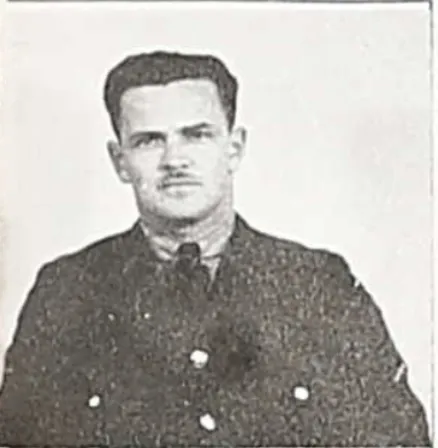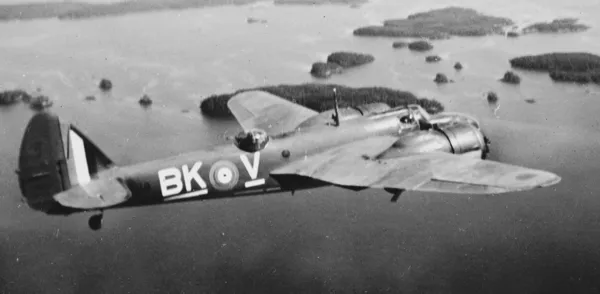Houston, Allan Dale (Sergeant)
Killed in Action 1942-January-30


Birth Date: 1916-July-08
Born: Macdonald College Quebec
Parents: Son of John and Agnes Houston, of Ste. Anne de Bellevue, Province of Quebec.
Spouse:
Home: St Anne de Bellevue, Quebec
Enlistment:
Enlistment Date: unkown date
Service
RCAF
Unit
115 Sqn- Squadron
Base
Patricia Bay, British Columbia, Canada
Rank
Sergeant
Position
Pilot
Service Numbers
R/77448
Accident Card - Bristol Bolingbroke Mk. I serial:716
This accident involved 1 aircraft on 1942-January-30. Bolingbroke s/n 716.
This accident involved 2 people. Houston AD, Whyte ME
This accident had 1 fatality. Sergeant Allan Dale Houston RCAF Killed in Action service no:R/77448 Bolingbroke 716
Bolingbroke serial: 716

Fairchild Bolingbroke Mk. IV, RCAF (Serial No. 9118), coded BK-V, No. 115 (Bomber Reconnaissance) Squadron, Patricia Bay, British Columbia, 1942.
The Bristol Fairchild Bolingbroke was a maritime patrol aircraft and trainer used by the Royal Canadian Air Force during the Second World War. Built by Fairchild-Canada, it was a license-built version of the Bristol Blenheim Mk IV bomber.
In 1935, the British Air Ministry issued Specification G.24/35 to procure a coastal reconnaissance/light bomber to replace the Avro Anson. Bristol proposed the Type 149, based on its Blenheim Mk I, with Bristol Aquila engines to give greater range. While the Air Ministry rejected this proposal, a Blenheim Mk I, retaining its Mercury VIII engines, was converted as a Type 149 (Blenheim Mk III) for the general reconnaissance role.The nose was lengthened to provide more room for the bombardier, with the upper left surface of the nose being scooped out to maintain pilot visibility during takeoff and landing.
The longer range also fulfilled a Canadian requirement for a maritime patrol aircraft. Consequently, Fairchild Aircraft Ltd. (Canada) of Quebec started production of the Blenheim Mk IV as the Bolingbroke (the originally intended name for the Blenheim IV). This type was nicknamed the "Bolly". After a small run of aircraft constructed to British specifications, as the Bolingbroke Mk I, Fairchild switched production to the Bolingbroke Mk IV with Canadian and American instruments and equipment. These versions also included anti-icing boots and a dinghy. One of the early Mk IV variants was the Bolingbroke Mk IVW which was powered by two 825 hp (615 kW) Pratt & Whitney SB4G Twin Wasp Junior engines. Incapable of maintaining altitude on one engine, the normal bomb load was reduced to 500 pounds on these aircraft to compensate for the low engine power. The most-produced variant was the Bolingbroke Mk IVT trainer, of which 457 were completed. A total of 626 Bolingbrokes were produced. Wikipedia
Aircraft Images
Bolingbroke 716
Bolingbroke Mk. I 716
To No. 119 (BR) Squadron, RCAF Station Yarmouth, NS, 1940 to 1941, coded "DM*N". Suffered two minor landing accidents at Yarmouth with this unit, both resulting in Category C14 damage, including one at 10:20 on 4 December 1940, and collapse of right main gear at 19:30 on 14 February 1941. To Western Air Command on 8 October 1941. Operated by No. 115 (F) Squadron, RCAF Station Patricia Bay, BC, from late 1941. Category A crash on 30 January 1942, while attempting a forced landing on the mud flats around Cowichan Lake after an engine fire. The airframe 166:50 logged time when struck off. Flight Sergeant A. Houston was killed but Flight Sergeant M. Whyte baled out safely.1940-07-31 Taken on Strength Eastern Air Command 2019-08-20
1940-December-04 Accident: 119 Squadron Loc: Yarmouth Names: Erickson | Kaufman | Young
1941-February-14 Accident: 119 Squadron Loc: Yarmouth Nova Scotia Names: Arrowsmith | Oates
1942-January-30 Accident: 115 Squadron Loc: Cowichan Bay Names: Houston | Whyte
1942-03-10 Struck off Strength Struck off after crash, see comments 2019-08-20